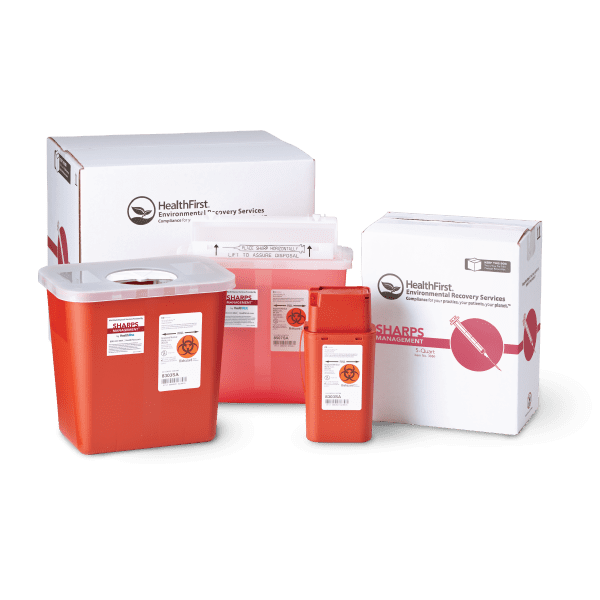Local Commitment: Your Neighborhood's Leading Medical Waste Removal Near Me
Local Commitment: Your Neighborhood's Leading Medical Waste Removal Near Me
Blog Article
Discovering Different Garbage Disposal Options for a Cleaner Setting
In the search of a cleaner atmosphere, the administration of waste disposal has emerged as an important focal point for sustainable advancement. With a multitude of waste disposal choices available, ranging from typical landfill methods to ingenious waste-to-energy modern technologies, the selection of how we handle our waste has far-ranging implications for our earth's well-being.
Recycling Approaches
Carrying out reliable reusing techniques is critical in reducing waste and promoting sustainability in our setting. Recycling involves the process of converting waste materials into multiple-use items to avoid unnecessary disposal.
An additional important recycling technique is composting, which includes disintegrating natural waste like food scraps and backyard trimmings into nutrient-rich soil. By including these various recycling approaches into our waste monitoring techniques, we can substantially minimize our ecological impact and move in the direction of a much more sustainable future.

Composting Strategies
Reliable waste management practices, such as recycling techniques, lead the method for a cleaner environment, and currently, changing the emphasis to 'Composting Techniques', we explore sustainable methods to break down natural waste for environmental advantage. medical waste removal near me.
Composting is an all-natural process that transforms organic waste, like food scraps and backyard trimmings, right into a nutrient-rich dirt modification. The secret to successful composting lies in producing the right balance of environment-friendly materials, such as vegetables and fruit scraps, and brownish materials, like dried out branches and fallen leaves. These materials disintegrate with the assistance of bacteria, breaking down the waste into beneficial garden compost.
There are different composting methods readily available to fit different demands. Standard yard composting includes layering natural materials in a container or pile and regularly transforming the mix to aerate it. Vermicomposting, on the various other hand, makes use of worms to break down natural matter into compost (click here). For those with minimal area, interior composting systems provide a convenient remedy. By using composting techniques, we can decrease the amount of waste sent out to garbage dumps while producing a helpful product for enriching soil and supporting plant development.
Incineration Benefits And Drawbacks
Incineration, as a waste disposal approach, provides both benefits and downsides that warrant mindful factor to consider in the realm of lasting waste management methods. On the favorable side, incineration can considerably decrease the quantity of waste, minimizing the demand for garbage dump room and possibly reducing greenhouse gas emissions.
However, there are notable disadvantages to incineration. One significant issue is the possible release of hazardous toxins into the air, such as dioxins, heavy metals, and particulate matter, which can have negative effects on human health and wellness and the setting. In addition, the high preliminary financial investment and operational costs of incineration centers pose economic challenges, making it a less affordable alternative contrasted to other waste monitoring strategies. Cautious surveillance and guideline are necessary to minimize these adverse effects and optimize the benefits of incineration as component of a detailed waste monitoring technique.
Garbage Dump Management Strategies
Land fills play an important role in waste management and ecological preservation by giving a control system for the disposal of strong waste products. Efficient landfill monitoring approaches are necessary to mitigate ecological effects and guarantee the lasting sustainability of these waste disposal websites. One key method is correct waste compaction to maximize making use of offered space within the garbage dump (click here). By compacting the waste, the volume is lowered, permitting more waste to be fit with time.
Moreover, the application of day-to-day cover techniques is crucial in minimizing odors, avoiding trash, and lowering the destination of insects. Covering the disposed waste at the end of daily aids to include smells and protect against possible environmental contamination. In addition, the surveillance of landfill gas exhausts and leachate levels is vital in making certain that environmental requirements are fulfilled which any prospective threats to surrounding ecosystems are reduced.

Waste-to-Energy Technologies
Among the innovative strategies to waste administration entails harnessing Waste-to-Energy modern technologies to transform strong waste into usable energy resources. Waste-to-Energy (WtE) technologies incorporate a series of processes that aim to remove energy from waste materials with thermal, chemical, or biological ways. This conversion procedure not just decreases the quantity of waste that ends up in garbage dumps but also creates useful power resources such as electricity, warm, or biofuels.
Incineration includes burning waste at high temperatures to produce warm and power. Gasification transforms waste into a syngas, which can be used for power generation or chemical production.
Executing Waste-to-Energy innovations can help reduce ecological issues linked with typical waste disposal methods while simultaneously giving an eco-friendly energy source. Nonetheless, cautious factor to consider should be provided to exhausts control and ensuring the sustainability of feedstock supplies for these modern technologies to be genuinely helpful for a cleaner setting.
.jpg)
Conclusion
Finally, exploring numerous garbage disposal choices such as recycling, composting, incineration, land fill monitoring, and waste-to-energy technologies is necessary for advertising a cleaner environment - click here. Each approach has its very own benefits and difficulties, however by utilizing a combination of these strategies, we can function in the direction of reducing the amount of waste that winds up in land fills and ultimately add to a much more lasting future for generations ahead
With a wide variety of waste disposal options offered, ranging from conventional land fill approaches to cutting-edge waste-to-energy modern technologies, the selection of how we manage our waste has far-ranging effects for our planet's health. medical waste removal service.Incineration, as a waste disposal approach, presents both benefits and negative aspects that warrant mindful consideration in the realm of lasting waste administration techniques.Land fills play an essential duty in waste management and ecological conservation by offering a control system for the disposal of strong waste products. By compacting the waste, the quantity is minimized, enabling for more waste to be fit over time
One of the ingenious strategies to throw away management involves taking advantage of Waste-to-Energy modern technologies to convert strong waste right into functional power resources.
Report this page